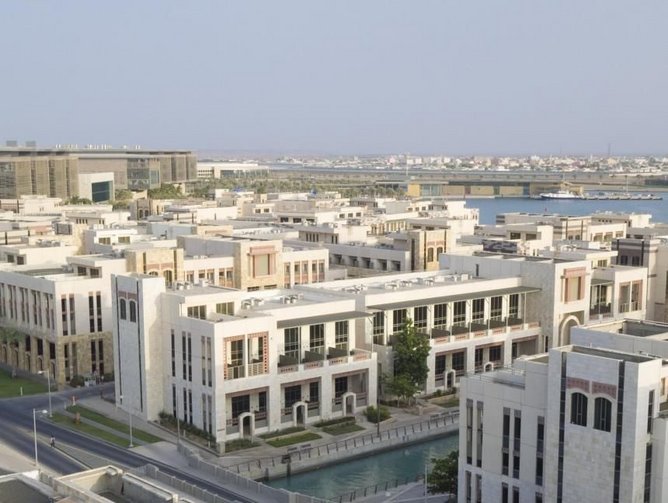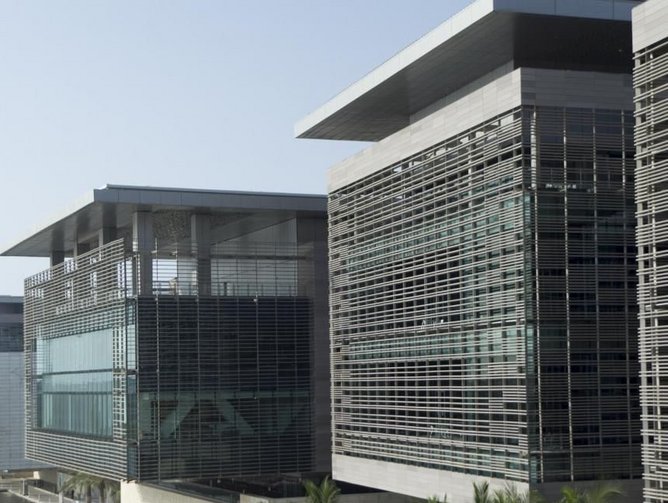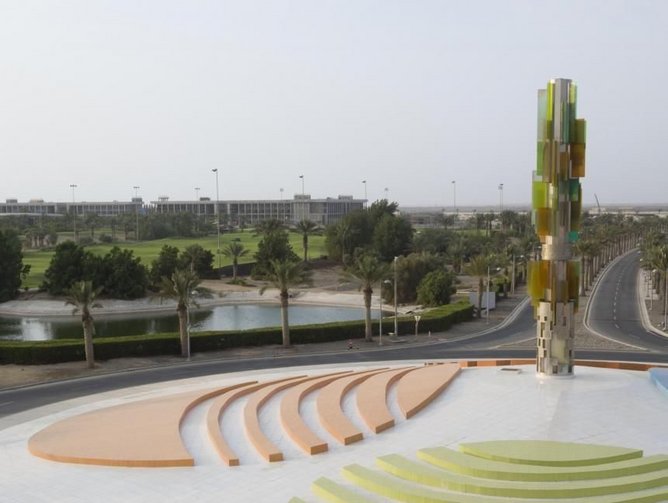KAUST: a living laboratory for innovation and advanced tech
Jason Roos has been the Chief Information Officer (CIO) at King Abdullah University of Science and Technology (KAUST) for just under three years. “Prior to coming to Saudi Arabia, I was the Chief Technology Officer (CTO) and Vice President of a large cancer research centre in Southern California and the CTO and Vice President of Stanford University’s medical centre. A vast amount of my career has been within an academic medical setting.”
Reflecting on when he first started at KAUST, Roos explains that he was already familiar with the Middle East having lived in the UAE before. “However, I had never lived in Saudi Arabia,” comments Roos, “it wasn’t until I was brought onsite to see KAUST that I was truly convinced of how incredible the place is. KAUST is very unique. We are currently in our tenth year of existence, with the ambition to build a world-renowned research and academic institute for Master’s, and doctoral degrees that is of the same caliber as MIT, the California Institute of Technology and Stanford University. Therefore, over the last 10 years we have been working to build state-of-the-art facilities that will ultimately help to change the economic landscape of Saudi Arabia.”
In addition to the research and academic institute, KAUST is surrounded by what Roos calls “a mini Silicon Valley”, to drive a culture of innovation and technological advancement. “As CIO I am not only responsible for the institute, but also for the entire ‘smart city’, comprising thousands of homes, as well as restaurants, shopping centres, a police department and a small hospital. Within the ‘smart city’ we have research centres from multiple Fortune 500 companies including Dow, Aramco and SABIC. Essentially, we are a self-contained community - ‘a living laboratory’. That gives us the unique ability to develop and redefine smart cities and digital experiences for the people that live, work and study within KAUST.”
To help advance technological innovation for digital smart cities, “Microsoft has been one of our closest and most valuable partners in this journey. When Microsoft first heard of the launch of the KAUST Smart Program they provided enthusiastic support by hosting members of the KAUST team for a visit to Microsoft’s executive briefing center at their headquarters in Redmond, Washington. This visit kicked off numerous discussions about leveraging KAUST as a living laboratory for smart city experiences and subsequently led to several design thinking sessions with an exceptional team from Microsoft. Looking at how we can better leverage our existing Microsoft solutions portfolio as well as how to build upon that foundation to create new and innovative experiences has been a critical component of our success thus far and we look forward to advancing this partnership even further over the next year.”
Currently, within the world of technology, Roos highlights that, globally, there is a strong buzz around utilising artificial intelligence, machine learning and high-performance computing in order to leverage autonomous functions and high levels of intelligence to enhance an organisation's capabilities. “At KAUST we want to utilise these trends within our ‘living laboratory’ to drive innovation in computing, personalised and precision medicine, population health, traffic control and mobility, to name a few. One area that we are looking into at the moment is the application of autonomous vehicles. Being an entire ecosystem city we have the ability to control almost every variable to thoroughly test these vehicles to develop a usable service.” In addition to these trends Mohamed Abdel-Aal, Head of Digital Experience and Innovation at KAUST Smart, has also seen an increased empowerment of knowledge and decision making, due to the way users interact with their mobile phones has evolved. “It adds to the situational awareness, which provides a level of intelligence that we can apply to automation,” adds Roos, “in the past you could automate, but you couldn’t predict, which is where artificial intelligence and machine learning has really provided a difference in automation to customise the individual experience. This is something we are looking to leverage to create an intelligent and unique experience.”
In order to achieve this Roos explains that there are multiple components to KAUST’s digital transformation strategy. “Although there is your traditional IT portfolio for basic applications to deliver your core business functions, in order to go beyond that and innovate, you need to look at the overall experience being provided to redefine and reimagine the basic portfolio. At KAUST we are looking to create a culture where people are allowed to experiment, to take risks and push boundaries to see what works and what doesn’t. If you don’t allow people to take risks - and occasionally fail - then you won’t encourage people to get out there and try to push those boundaries to create new innovations.”
Currently at KAUST, Roos and Abdel-Aal are working on a number of innovation projects including autonomous vehicles, drone delivery, cashless pay and facial recognition. “Coming back to autonomous vehicles, we are assessing and experimenting with this technology for two different shuttles on a joint agreement that we've built with multiple companies,” comments Abdel-Aal who explains the complexity involved when innovating in this area. “The assessment of autonomous shuttles includes multiple dimensions, one being the operational aspect. Can we run these shuttles? Can we charge them? Can we maintain them? Will they withstand the heat? A second dimension is digital integration to develop a smart experience which poses questions such as, will users be able to look up the route on their phone? Can users book the shuttles in advance? Can they interact with the experience using a smart and interactive bus stop? The third dimension is the actual research of the vehicles, such as battery materials and artificial intelligence sensor technology. Finally the fourth dimension is optimised operational cost.”
Further detailing the current innovations at KAUST, Roos explains the university’s development of its computing and storage capabilities. “When KAUST was first established, our supercomputer “Shaheen” was an IBM Blue Gene system which put KAUST on the map for high-performance computing to support our mission and research areas. KAUST’s second generation supercomputer – a Cray XC 40, which has been in place since 2015 - now supports the high-end research that we do. KAUST’s supercomputing environment is managed by our Core Laboratories, ensuring that our researchers and scientists have access to high-end compute capabilities, which are commonly used for high-resolution modeling, simulations, cloud and GPUs.”
Other innovations the university is working on include drone technology and cashless pay. “Currently at KAUST we are exploring the potential of using drones beyond basic surveillance. In fact, our team is working with our facilities and community life group to look at how we could leverage drones for delivery to our smart houses. To achieve this would require KAUST to replicate the layout of the city into a digital twin in order to create drone corridors to manage the flight patterns of the drones. In terms of cashless payment, we are currently piloting various forms of cashless experiences, including digital gateways and facial recognition to create a unique experience for the users. We are also looking to develop cashless stores—building an environment where someone could walk into a store, grab what they need and, via something like facial recognition, biometrics or barcoding, the person is charged for what they have bought once they leave the store,” adds Roos.
Reflecting on the university, Roos believes its biggest strengths are its world-class facilities for high-level tech research and innovation, and its diversity in bringing the best from around the world into one place. “I believe that KAUST, being only 10 years old and being world-renowned is a tremendous success. To achieve this level of recognition after just one decade is truly remarkable,” adds Roos, who highlights that this achievement has been a collaborative effort between the entire KUAST city, as well as its partnerships it has made over the years. “We have worked very closely with some of our partners and they have been valuable from the very beginning to drive innovation and develop technologies and solutions. For KAUST, our partnerships are critical for our success,” concludes Roos.




- Expansion plans for Dow in Middle EastTechnology

